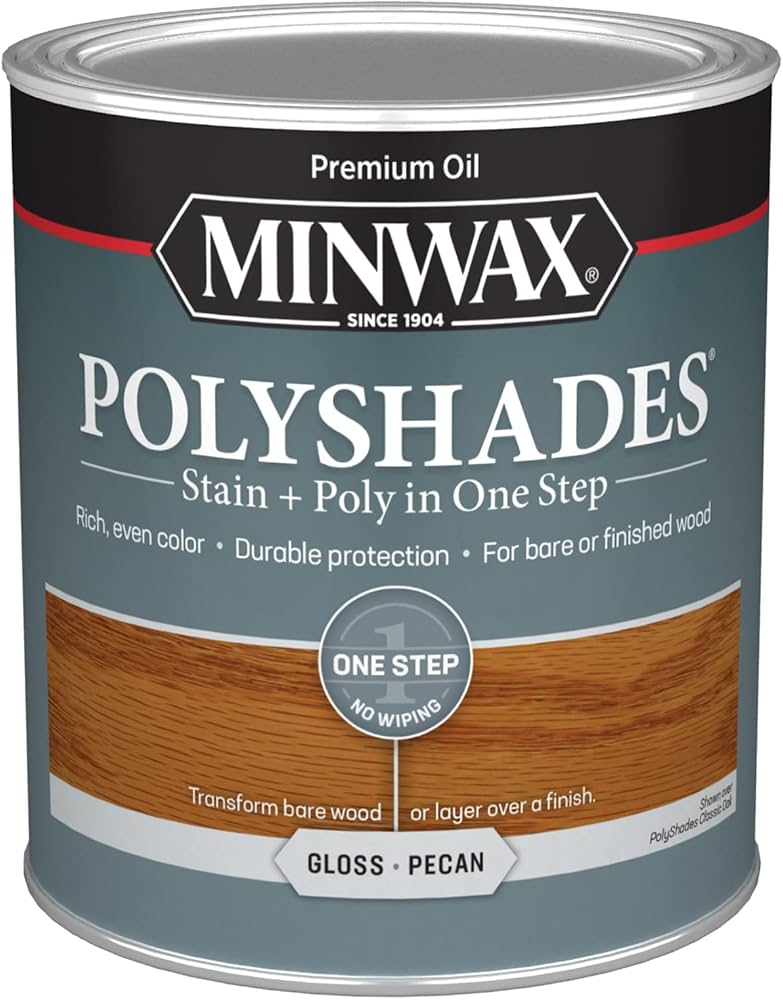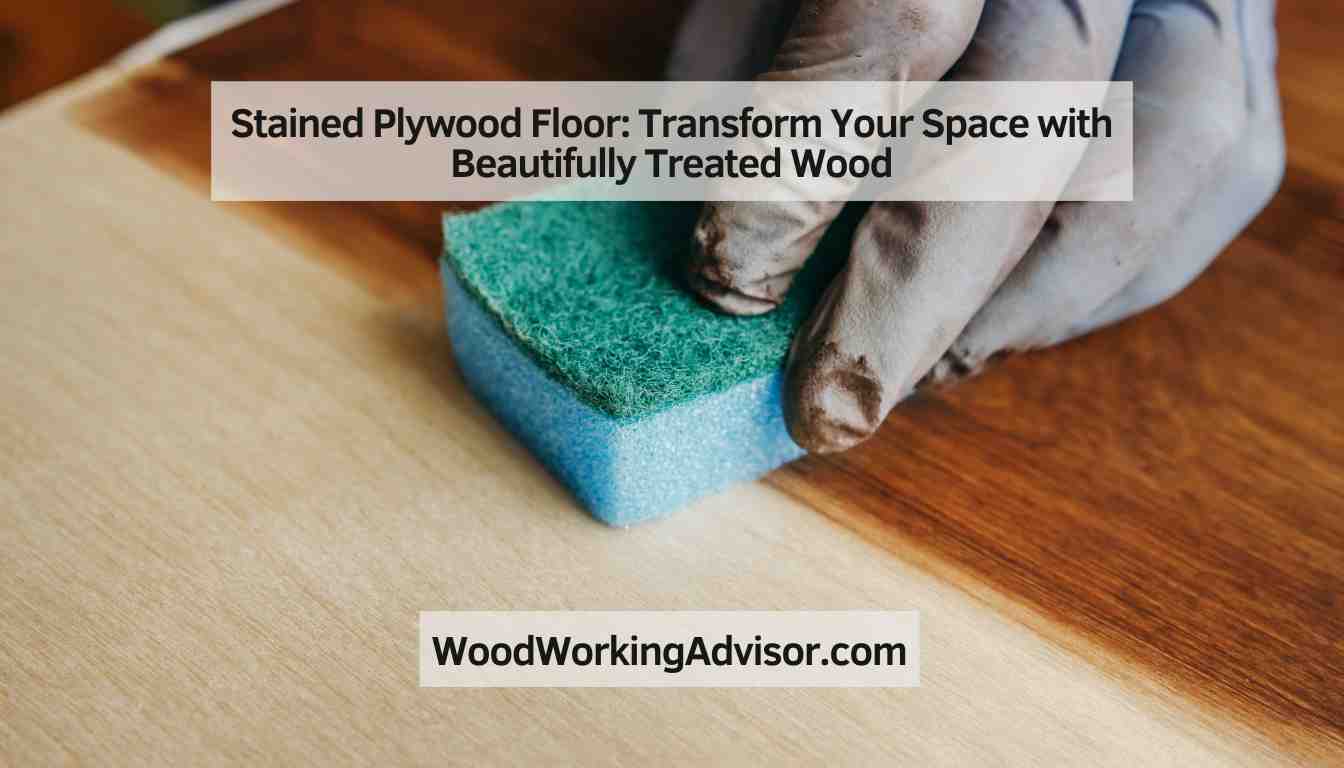Yes, you can stain plywood for flooring at home. Follow expert tips for the best finish.
Staining plywood floors can be a cost-effective way to achieve a beautiful look in your home. Many homeowners wonder about the possibility of staining or painting plywood to create a unique and stylish flooring option. By following the right steps and techniques, you can achieve professional results that mimic the appearance of more expensive hardwood floors.
We will explore the process of staining plywood floors, including preparation, staining, and finishing techniques to help you create a stunning and durable floor surface. By following these expert tips, you can transform your plywood floors into a beautiful feature of your home.
Preparing The Plywood
Before beginning the staining process, it is crucial to properly prepare the plywood subfloor. This involves sanding the subfloor to create a smooth surface and leveling and sealing it to ensure the stain adheres evenly.
Sanding The Subfloor
To sand the subfloor, start by thoroughly cleaning the surface to remove any debris or dirt. Then, using a sanding machine with fine-grit sandpaper, smooth out any imperfections in the plywood.
Leveling And Sealing
After sanding, it is essential to level any uneven areas on the plywood subfloor. This can be done using a self-leveling compound that fills in gaps and provides a smooth base for the stain.
Next, apply a sealer or primer to the plywood to protect the wood and ensure the stain adheres evenly. Allow the sealer to fully dry before proceeding with the staining process.

Credit: www.amazon.com
Staining Techniques
Staining plywood floors can add a beautiful touch to your space, enhancing its natural beauty. The staining techniques used can significantly impact the final outcome of your plywood floor. Let’s explore the key aspects of Choosing the Right Stain and Applying the Stain for a successful staining process.
Choosing The Right Stain
- Consider the color tone and wood grain you desire for your plywood floor.
- Test the stain on a small area to ensure it matches your vision.
- Choose between water-based or oil-based stains based on the desired finish.
- Consult with experts or references for stain recommendations.
Applying The Stain
- Prepare the plywood surface by sanding it smoothly for an even finish.
- Apply the stain evenly using a brush or cloth, following the wood grain direction.
- Allow the stain to penetrate the wood for the recommended time before wiping off excess.
- Repeat the staining process for deeper color saturation if necessary.
Protective Finishes
When it comes to preserving the beauty and durability of your stained plywood floor, applying protective finishes is essential. Protective finishes not only enhance the appearance of the wood but also provide a barrier against wear and tear, moisture, and stains, extending the lifespan of your flooring. In this section, we will explore the application of polyurethane and the benefits of a clear topcoat to ensure your stained plywood floor remains in top condition for years to come.
Applying Polyurethane
Applying polyurethane is a crucial step in protecting your stained plywood floor. Polyurethane forms a tough, durable finish that acts as a shield against scratches and moisture. To apply polyurethane, follow these simple steps:
- Clean the surface thoroughly to remove any dust or debris.
- Use a high-quality brush or applicator to apply a thin, even coat of polyurethane, working in the direction of the wood grain.
- Allow the first coat to dry completely before lightly sanding the surface with fine-grit sandpaper to smooth out any imperfections.
- Apply a second coat of polyurethane and allow it to dry thoroughly before using the floor.
Benefits Of Clear Topcoat
The clear topcoat offers several benefits for your stained plywood floor:
- Enhanced Durability: A clear topcoat provides an additional layer of protection, increasing the floor’s resistance to abrasions and daily wear.
- UV Protection: It helps prevent the wood from fading or discoloring due to exposure to sunlight, maintaining the floor’s natural color and warmth.
- Easier Maintenance: The topcoat makes cleaning and maintaining the floor easier by creating a smooth, non-porous surface that repels dirt and spills.
Tips And Considerations
When it comes to remodeling or renovating your home, stained plywood floors can add a touch of elegance and warmth to any room. Not only are they cost-effective, but they also offer versatility and a unique aesthetic appeal. However, before embarking on this project, there are a few tips and considerations you should keep in mind to ensure a successful outcome.
Ensuring Even Stain Absorption
For stained plywood floors to look their best, it’s crucial to ensure even stain absorption. This can be achieved by following these steps:
- Prepare the floor: Start by thoroughly cleaning the plywood floor and removing any dust, dirt, or debris that can interfere with stain absorption.
- Apply a pre-stain conditioner: Before applying the stain, consider using a pre-stain conditioner. This product helps the wood absorb the stain more evenly, resulting in a consistent color.
- Test the stain: Always test the stain on a small and inconspicuous area of the plywood floor before proceeding. This allows you to see how the color will appear and make any necessary adjustments.
- Apply the stain: Using a brush or roller, apply the stain to the plywood floor in long, even strokes. Be sure to follow the manufacturer’s instructions regarding drying times and the number of coats needed.
- Protect with a sealant: Once the stain has fully dried, apply a protective sealant to safeguard the plywood floor from wear and tear. This will also enhance the durability and longevity of the stained finish.
Maintenance And Care
Maintaining and caring for your stained plywood floors is essential to preserve their beauty and extend their lifespan. Here are some maintenance tips to keep in mind:
- Regular cleaning: To keep your stained plywood floors looking their best, regularly sweep or vacuum to remove any dirt or debris. Avoid using harsh chemicals or abrasive cleaning tools that can damage the stain or the surface.
- Protective measures: Place doormats at entryways to prevent dirt and moisture from being tracked onto the stained floors. Use furniture pads or coasters to prevent scratches and dents from heavy furniture.
- Periodic refinishing: Over time, the stain on plywood floors may wear off or fade. To revive the appearance, periodic refinishing may be necessary. This involves sanding down the surface and reapplying a fresh coat of stain and sealant.
By following these tips and considerations, you can enjoy beautiful and long-lasting stained plywood floors in your home. Whether you’re renovating your living room, bedroom, or even your kitchen, these floors can add a touch of elegance and sophistication to any space.

Frequently Asked Questions For Stained Plywood Floor
Can You Stain Plywood For Flooring?
Yes, you can stain plywood for flooring. Follow these tips for the best finish: level and seal the plywood floor, sand it, and apply the stain with a wood grain effect. Hardwoods like oak take stain well, while pine and birch may require wood conditioner to control absorption.
How Do You Make Plywood Floors Look Nice?
To make plywood floors look nice, first level and seal the floor. Then, sand and paint it with a wood grain effect for a hardwood look. This process will enhance the appearance of your plywood floors.
Does Plywood Look Good Stained?
Yes, plywood can look good when stained. Hardwoods like oak stain well, while pine and birch may need wood conditioner to control absorption.
Can I Use Plywood As A Finished Flooring?
Yes, plywood can be used as finished flooring by installing it on top of an existing subfloor in a desired pattern.
Conclusion
In essence, staining plywood floors provides an affordable option to achieve a stunning, hardwood-like finish. With careful techniques and considerations, transforming plywood into high-quality flooring is indeed achievable. By following the guidance of experts, homeowners can craft durable and visually appealing plywood floors that emulate the timeless allure of hardwood.
Embracing these methods offers a cost-effective and creative approach to elevating interior spaces.


